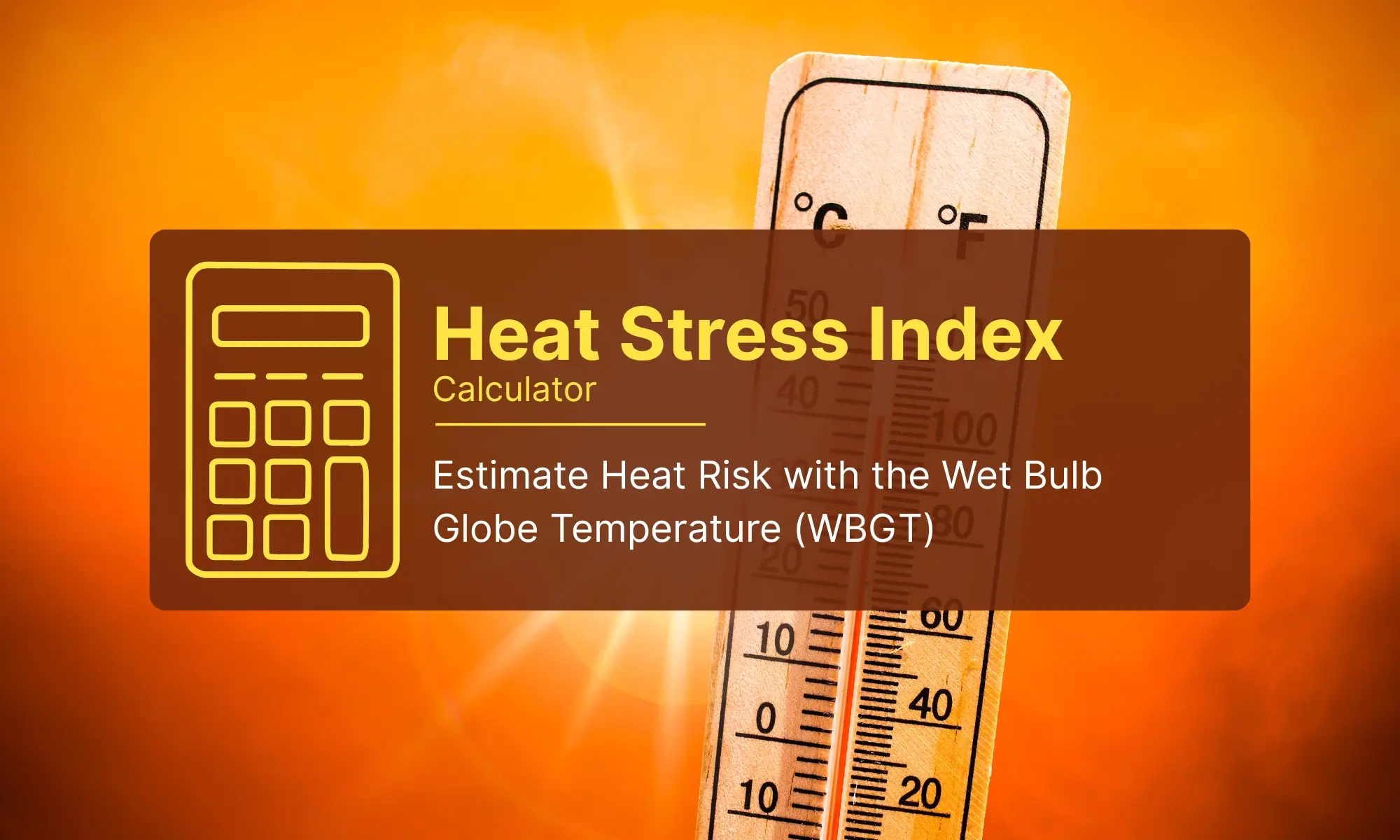Heat Stress Index (WBGT) Calculator
What is the Heat Stress Index (WBGT)?
The Heat Stress Index, commonly measured using the Wet Bulb Globe Temperature (WBGT), is a comprehensive indicator of heat stress in the workplace or outdoor environments. It combines air temperature, humidity, wind speed, radiant heat, and sunlight to estimate how hot it feels to the human body.
The WBGT Calculator helps assess environmental conditions to prevent heat-related illnesses, such as heat exhaustion and heat stroke, especially in physically demanding jobs or high-temperature climates.
WBGT vs. Air Temperature
Unlike standard air temperature, WBGT provides a more realistic measure of how heat affects the body during physical activity. It includes:
- Dry Bulb Temperature (DBT): Regular air temperature
- Wet Bulb Temperature (WBT): Reflects humidity and evaporative cooling
- Globe Temperature (GT): Accounts for radiant heat from sun or hot surfaces
WBGT Calculation Formula
For outdoor environments with solar load:
WBGT=0.7×WBT+0.2×GT+0.1×DBT
For indoor environments or shaded areas:
WBGT=0.7×WBT+0.3×GT
Why Monitor WBGT?
Tracking WBGT is essential for:
- Protecting workers from heat-related illness
- Complying with OSHA, ISO 7243, and military standards
- Managing outdoor work, construction, agriculture, and sports
- Creating safe schedules for physical exertion in hot environments
Heat Stress Risk Levels (WBGT Guidelines)
| WBGT (°C) | Risk Level | Recommended Action |
|---|---|---|
| < 25 | Low | Minimal risk for healthy individuals |
| 25–28 | Moderate | Monitor vulnerable individuals |
| 28–31 | High | Limit exposure, increase rest breaks |
| 31–33 | Very High | Implement work-rest schedules |
| > 33 | Extreme | Avoid strenuous work; emergency protocols |
How to Reduce Heat Stress
- Ensure hydration and provide shaded rest areas
- Implement work-rest cycles based on WBGT levels
- Provide cooling gear and PPE for hot environments
- Train workers to recognize heat illness symptoms
- Use real-time WBGT monitoring or forecasting tools

